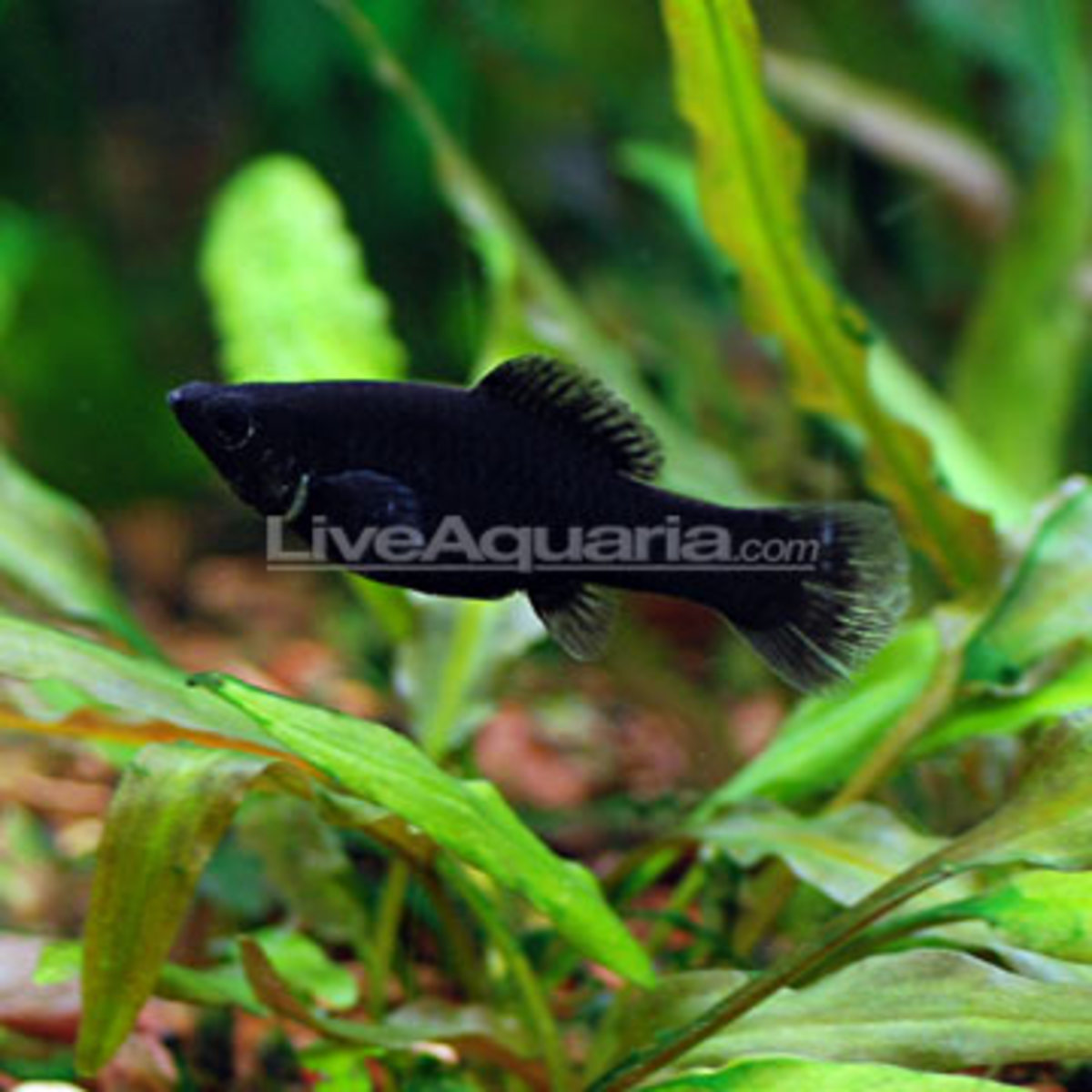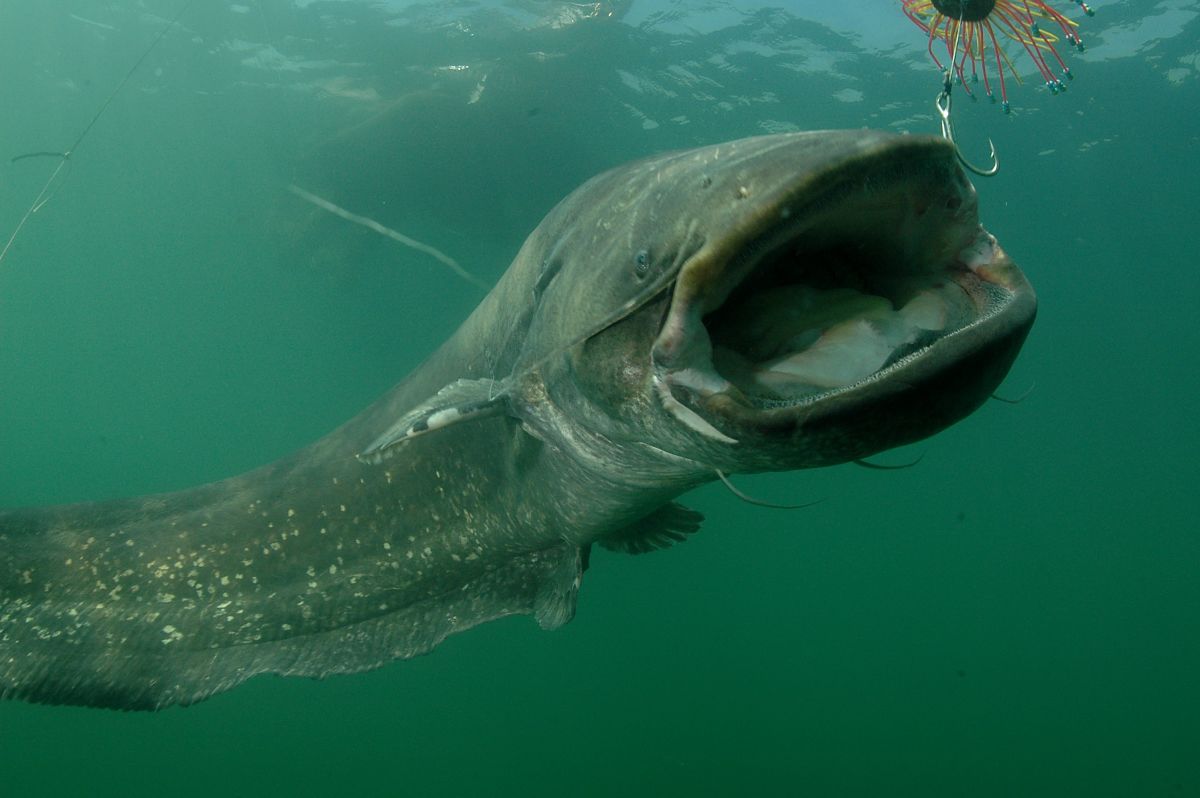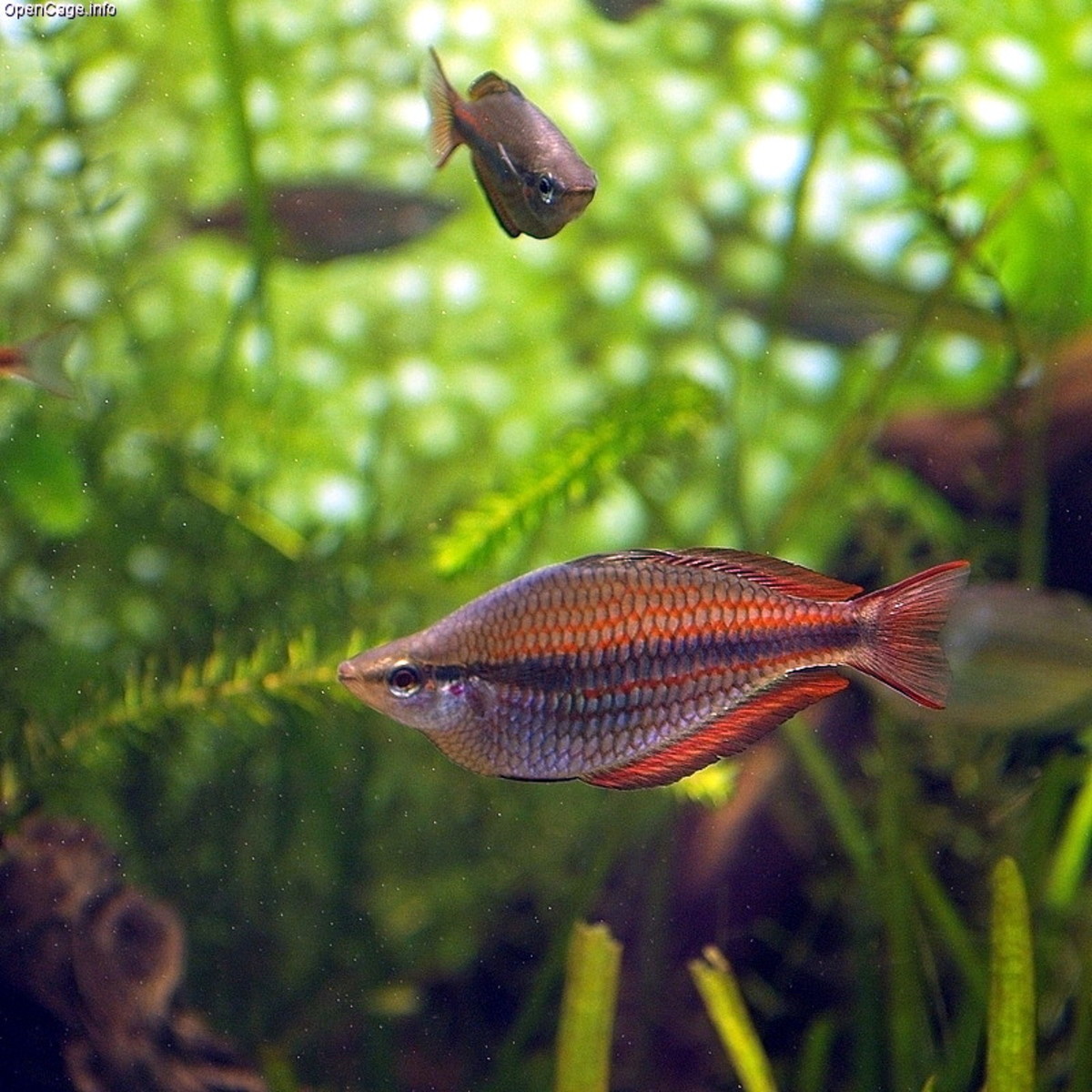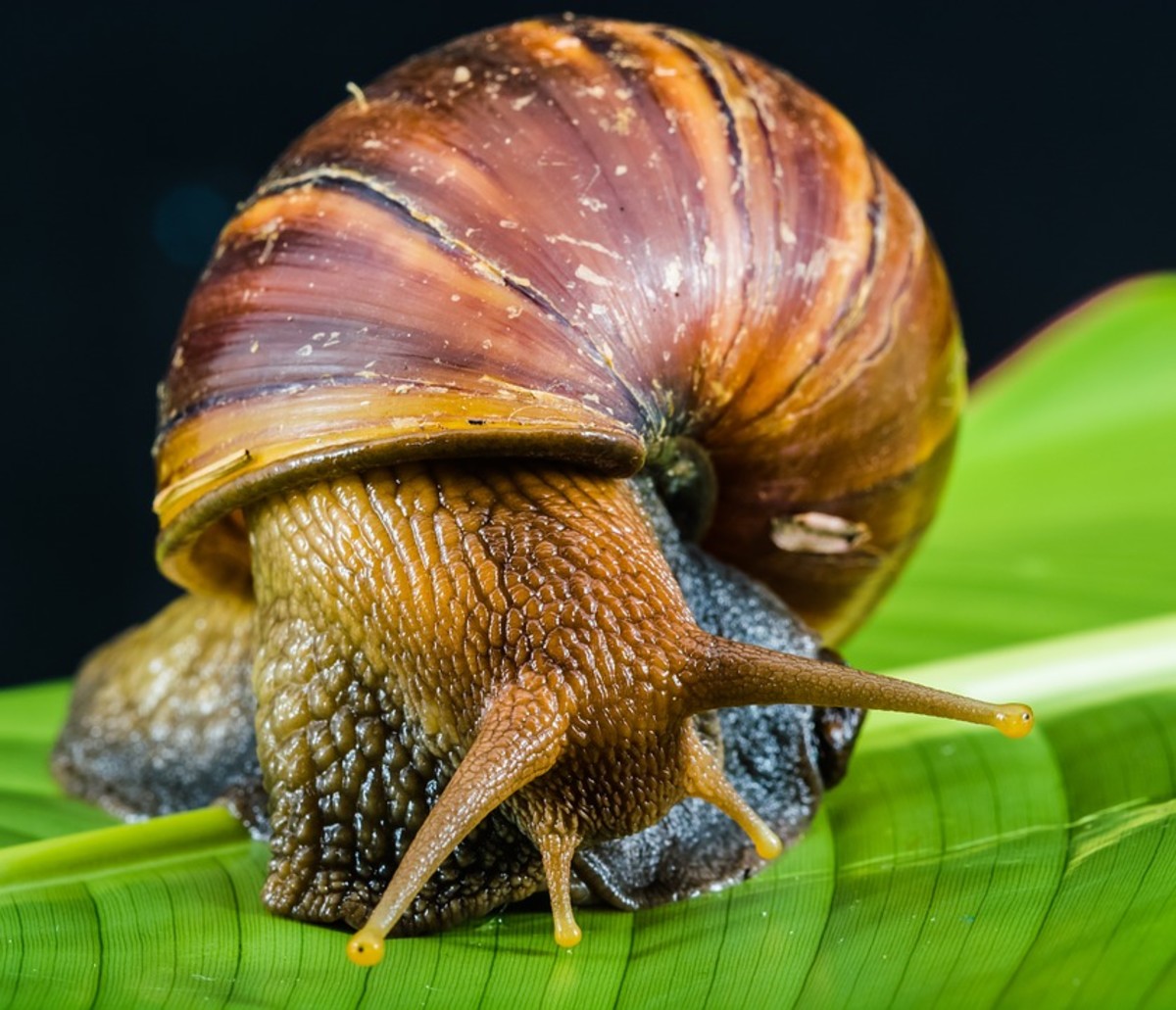How to Set Up a Native Saltwater Aquarium
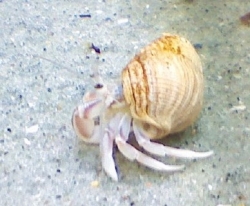
Catch and Keep Your Own Aquarium Creatures
If you are fortunate enough to live near the beach, you can catch and keep your own sea creatures. This lens is about my own experience setting up a native tank. My native tank is my favorite aquarium, partly because it is always changing and partly because I can catch creatures and release them later, which isn't a luxury you have with other types of aquaria.
About My Aquarium
South Carolina Coastal Aquarium
I live near Myrtle Beach, South Carolina, which has sea and salt marsh. I wanted to have a native tank since before I lived in South Carolina. I used to teach college in Tennessee. I took my Invertebrate Zoology class on an extended field trip to Georgetown, SC one year to learn about marine invertebrates and to stock a 300 gallon aquarium that had been left to the school. I have a fun story about an octopus loose in a van full of college students that I'll save for another time. I learned a lot from that experience (both the field trip and the octopus-drive) and had so much fun that when I moved to the area, I was sure that I wanted to have a tank in my home that included the local wildlife.
Bigger Is Better... Up to a Point
It has taken me a few years to get that tank started, because I wanted to have a big aquarium for the project. It's easier to maintain healthy conditions in a big tank, but it's harder to move a large tank and a big aquarium is a lot more expensive to set up than a smaller one. When you set up a native tank, use the largest tank you can afford *but* be sure it's a manageable size so that you can catch creatures. My tank is 95 gallons. I think 150 gallons is about as big as I would want to go. The 300 gallon tank I played with in Tennessee was too big. For one thing, changing the water required a significant investment in salt. Also, it was too big to allow easy access. It's possible to do a marine tank with a 20-gallon or 29-gallon tank, but it's a lot easier if you have 55-gallons or more.
Hermit Crab with Anemone
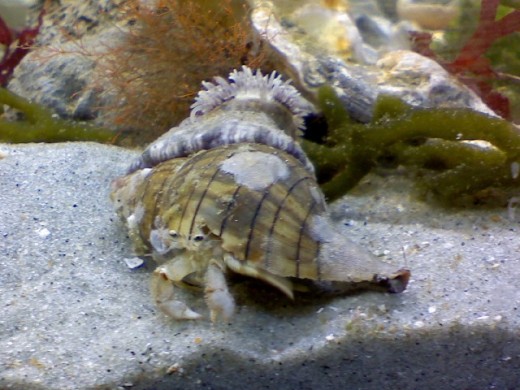
The Big Stuff
Major Aquarium Components
Once you have a tank (preferably on a sturdy stand), you're going to need a light, substrate (the layer on the bottom of the tank), a pump and filter, and salt (if your aquarium is brackish or marine).
The Light
My advice to you: Don't skimp on the light! You can stick an inexpensive fluorescent shoplight over your tank and you'll be able to keep many creatures alive, but they can thrive and may even reproduce if you can supply a more natural spectrum. Buy the best light you can afford. This is especially important if you plan on keeping coral or plant life. A good light saves you a lot of problems, I promise! I can't recommend a specific light because it is going to depend on what you are keeping.
The Pump
This depends on your tank. My tank came pre-drilled so I'm running a Magnum pump under the aquarium with a protein skimmer, carbon filter media, and bioballs. The filters that hang on the sides of the tank are nice too. If you use one of those, try to get one that has a biowheel (wheel-looking filter that helps detoxify waste). A protein skimmer is well worth the money... plus it doesn't have to be a lot of money. A simple vortex-type skimmer works great. More pumping power isn't necessarily better. I have a pump that is a little too large for my tank and it's a bit loud. Aim for the recommended pump size for your tank.
The Substrate
This can be easy. Use what you have! My aquarium has a layer of sand plus a bunch of shells that I picked up on the beach. I threw in a few pieces of driftwood and a couple of rough rocks that I found in the water. Basically, try to mimic the natural environment, but keep an eye on chemistry. Driftwood can be a bad plan if it's decaying, for example. Pay attention to your shells. If they happen to be alive and die you can badly contaminate your tank.
The Salt
I use Instant Ocean but there are special formulations for coral or other set-ups. Use a high quality salt. If you don't, you won't be supplying essential trace elements and your tank will suffer for it. I know it may be tempting to use water from the source, but I think most people will tell you the synthetic seawater works better. That has been my experience, too.
Books About Aquaria
You can learn a lot about keeping an aquarium from looking up information online. Sometimes it's nice to have a book in your hands, though.
Example of a Brackish Aquarium
A brackish tank contains some salt, but not as much as you would find in a reef tank or normal saltwater tank. Fish that live in brackish water can typically withstand significant shifts in salinity and temperature.
Find Aquarium Supplies
I started this list with some materials that I think are necessary to setting up a native aquarium. Feel free to add your own submissions. Don't forget to vote up/down!



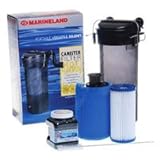

Other Aquarium Essentials
I'm a minimalist here. I'm sure there is a lot of great stuff you can get for your tank, but the only other equipment I use is a hydrometer (need to try to match the salinity of the native habitat), a net, a good bucket, water conditioner (I use tap water, so I dechlorinate the water before mixing the salt), and I bought some food for my creatures. I use shrimp pellets and cichlid pellets. Your food will depend on your animals.
I do not have a pH test kit, thermometer, nitrate/nitrate test kit, heater, etc. To be honest, I don't use them with any of my aquaria. If your water supply is scary, consider investing in these things.
Eastern Sea Robin
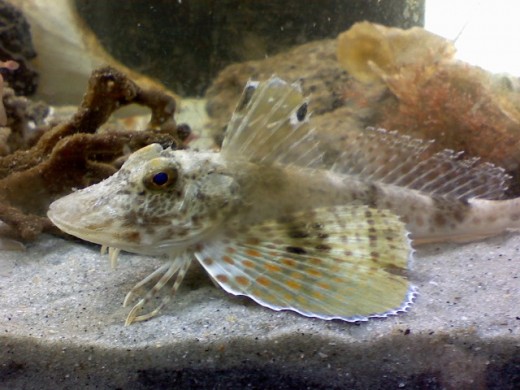
A Fish That Walks
Set Up the Aquarium
There is the 'right' way to do this and then there is the way I actually do it. Ideally, you want to let the tank settle for a couple of weeks after set-up before introducing anything living, but...
I filled my tank part way, added water conditioner to dechlorinate it, dumped in sand, dumped in shells (I left a sandy area free of shells), added 'decorations', filled the tank to the line required by the pump, and fired up the pump.
Next I added the salt. Never mix the salt and water actually in the tank like this except during start-up. From this point on, only do this in a bucket and match the salinity (using the hydrometer) between bucket and tank. I aim for the low end of marine, since some of my animals come from the marsh, which is brackish.
I don't care about my temperature except that I want the temperature of the tank to be the same temperature as the water in the bucket containing organisms. But then, I live in South Carolina and can get away with this. If you live somewhere where your home and your water temperature are different then you are going to need to heat or cool your tank.
Don't add plants or animals! Give the tank time to settle down. You should wait weeks, but I waited a couple of days.
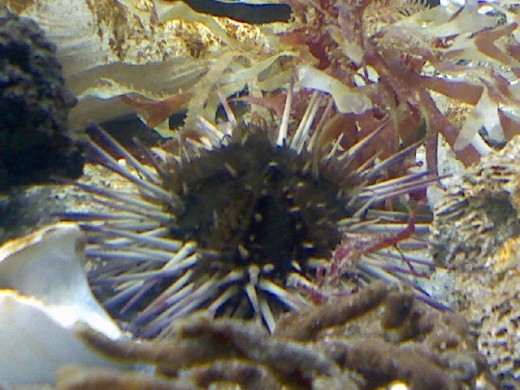
Adding Creatures
You have a few options with a coastal tank. You can add inexpensive brackish fish from a pet store, like mollies, to make sure your water isn't deadly and to get the chemical cycles started. If you go this route, only add a couple of fish. The food you feed the fish and the wastes they produce will prime your filter media and give the bacteria in your substrate a foothold. Your lights will help the algae get started. I recommend having a day/night cycle with the lights, but it's up to you.
I didn't add mollies. I added an organism I knew would act as an indicator for me. I found a sea urchin. The urchin looks a little rough in this photo. It had been washed up on the beach and was missing all of its upper spines. Hey... it was a goner if I didn't pick it up, so I figured I was giving it a chance at life that it wouldn't have otherwise. I need to take a photo of it now. It is a lot bigger and has regrown its spines. I'm getting ahead of myself though.
What I like about urchins is they can tell you if they are unhappy. A happy, healthy urchin will slowly wave its spines around. It has tentacles that will be active if the urchin is healthy. A sick urchin will not move, but it will 'decorate' itself with bits of shell and detritus. If you see an urchin engage in that behavior then something is wrong with the conditions of the tank. It could be the temperature. It could be the salinity. Chances are there is a chemical imbalance or a bacterial overgrowth, though, and you'll need to do a partial water change. Not fun! Avoid doing water changes and try to get the tank conditions right from the outset. Introduce additional animals gradually and don't overcrowd your tank. If something does die, remove it promptly so that it won't decay and damage your water chemistry.
Same Urchin, Couple of Months Later
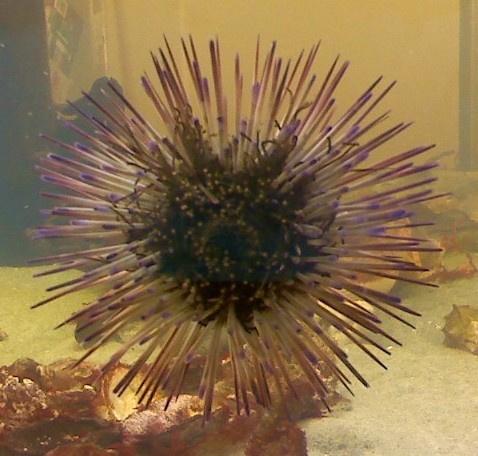
Catch and Release
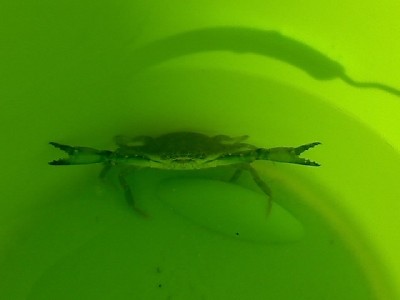
There are several reasons why you might want to catch a creature for your tank and then release it later. It may decide it wants to snack on everything else in your tank (like the angry blue crab in the photo, which chewed the arms off of my starfish for Thanksgiving dinner). You may realize you can't meet the needs of the animal and need to return it to its habitat to keep it alive. The creature may grow too big. You may just want to set it free. Whatever your reason, you need to put some thought into how you release your pet back into the wild.
The Net
If you've had an aquarium for a while then you already know this, but just in case you're new to this: have a net for your aquarium and don't use it for any other aquarium. You don't want to risk some form of contamination between tanks. There are products you can buy to disinfect your net, but I just let my net dry out between uses. Make sure your net is large enough for your creatures. If you only use the net for emergencies, chances are your animals won't fear it and you won't have a terrible time catching things.
The Bucket
Don't use your bucket for anything except this tank! If you have to clean it, rinse it with water and no soap. To release an animal back into the wild, fill your bucket partway with water from your tank. Using this water will help reduce stress. Catch your animal and put it in the bucket. Don't have the water level so full that there will be a chance of the bucket's contents sloshing out during transport.
The Release
You want the temperature and salinity to be as close as possible between your bucket and the release location, which usually should be where you caught the animal. You can add 'wild' water, a bit at a time, until your bucket is full, then set the bucket in the water and let your animal leave in its own good time. Watch for indications of stress when you are adding the new water. If it doesn't look good, slow down.






